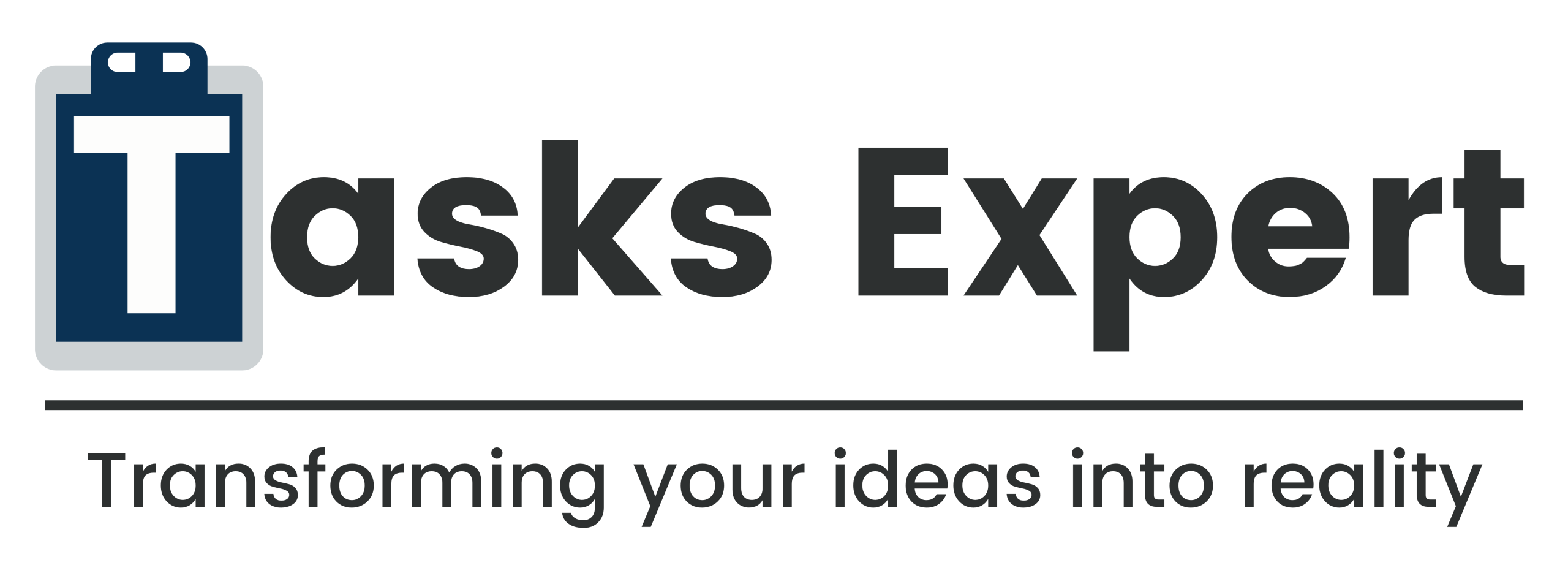Introduction
Healthcare institutions face increasing expectations to provide intelligent, faster, and personalized healthcare solutions to their patients. But at the heart of any successful innovation, from AI diagnostics to remote patient monitoring, is a fundamental foundation. Healthcare Data Integration knits together patient data, diagnostics, and treatments across departments, platforms, and institutions to create a single, holistic view of the patient’s journey.
This type of integration does more than improve access to information: It facilitates better clinical decision-making (which can ultimately decrease the amount of duplicated services across networks), all of which, together, can increase overall efficiency between systems. Without that, digital health efforts run the risk of being a collection of disconnected tools instead of a holistic solution. As health systems move toward increasingly data-driven and patient-centered models, the ability to unify, manage, and employ data strategically becomes not a preference but a strategic backbone of transformation.
In this blog, we’ll discuss how Healthcare Data Integration is enabling innovation, improving efficiency, and building the infrastructure for scalable, compliant, and future-ready healthcare.
Tying Together the Siloes: A Fundamental Problem
One of the largest barriers to digital health transformation is the fact that systems don’t talk to one another. Hospitals, clinics, labs, pharmacies, and even insurers often have their servers and databases and don’t share data or even platforms. Critical patient information gets trapped in silos, leading to delays, duplication, and communication breakdowns.
Healthcare integration solves this problem by creating one unified environment where all health systems commingle. It allows key information from disparate sources to be merged into a unified, accessible patient view.

Validating with robust medical data integration will help to avoid:
- Redundant testing, as a result of missing historical results.
- Medication errors caused by gaps in medication history.
- Breaks in care, from unsent specialist notes.
- Incomplete systems and back-office processes, such as manually transferring records.
With seamless integration, a radiology provider can receive a physician’s notes while a pharmacy system autofills addresses from new prescriptions, all without an extra email to drop from the sky or phone call to filter.
The integration of clinical data is also critical as it allows systems to share not just data, but data that is structured in a way that is meaningful across systems. With standardized formats, map rules, and syncing in real time, clinicians are provided with clean, trusted information precisely when they need it.
Behind this are sophisticated healthcare data warehouses that promote the exchange, security, and enhancement of all the integrated data. These systems decrease administrative hassles and aid in automation, compliance, and even clinical efficiency.
Integration is not about breaking down silos, although that happens, and creates a more seamless workflow; it’s about improving the care outcome for patients.” When systems are linked, care gets faster, safer, and much more coordinated.
Empowering Clinical Decision-Making
The quality of healthcare decisions depends on the data on which they are built. Doctors often have to make decisions without fully knowing a patient’s medical history or having all the lab results; they’re essentially navigating in the dark. That gap raises the odds for misdiagnosis, delays, and wasteful testing.
Medical data integration closes that gap. It pulls information from multiple sources and compiles them into a single digital chart. This helps care providers make a precise decision.

Powerful integration of clinical data results in:
- Enhanced diagnostic efficacy, coupled with all data relevant to the patient on screen.
- Faster decisions with facilitated hunts for data.
- Fewer readmissions, through more informed discharge planning.
- Smarter prescriptions, free of conflicts or allergies.
In addition, integration of medical data encourages predictive modeling and data-guided decision systems. On top of an integrated data foundation, AI tools and analytics platforms can produce alerts, suggested treatments, and even predict potential risks, all in aid of clinician judgment.
To facilitate this, health IT tools provide integrated software platforms that include decision support systems, real-time dashboards, and mobile capabilities. These instruments help reduce cognitive load while making sure data stays secure, pertinent, and actionable.
And lastly, healthcare data management systems make sure all this rich data environment is running seamlessly behind the scenes, cleaning, syncing, managing, and protecting your data across all channels.
This isn’t so much about better data as letting for better health care, one decision at a time.
Also Read: Content Marketing in Financial Services
Powering Telehealth and Remote Monitoring
The demand for telehealth and home health is growing as healthcare delivery models evolve. But if those advances are not well integrated with the data, they might end up being expensive add-ons instead of force multipliers of care.
Integrated health care data helps attach those very same remote tools and virtual visits to that central patient record, and shares clinical information with patients and providers simply.
This allows monitors to automatically record moment-by-moment vitals, like heart rate, oxygen saturation, or glucose, directly in the patient’s chart. That allows health providers to check in on the patient without making a personal visit.

This is how integration is helping to drive modern care delivery:
- Wearable device data automatically populates EHRs in real-time for ongoing monitoring.
- Documentation of telehealth sessions pushes updates back into clinical systems.
- Medication tracking tools can trigger missed dose alerts to physicians.
- Patient testing outcomes can be recorded and monitored in real-time.
And this is all enabled by strong clinical data integration. Healthcare data management systems orchestrate the transfer, storage, and security of crucial information so it is not only accessible but also secure.
Improved Operational Performance and Cost Effectiveness
The operational underbelly of the health system is just as important to patient care and the functioning of the institution as the clinical side. From admissions through billing, and inventory to staffing, the efficiency of these systems is what pays, both in the quality of care you provide, as well as its costs. That’s where healthcare data integration comes to the foreground behind the scenes.
When administrative platforms, EMRs, inventory systems, and financial software are connected, integration reduces repetitive manual tasks and increases the accuracy and consistency of information across a health system.

Strong oncology Medical Data Integration can enable healthcare providers to:
- Automate patient enrollment through the integration of intake forms with EMRs.
- Monitor the bed and room real-time status in all departments.
- Simplify billing and insurance claims through reliable shared data.
- Project staffing requirements using patient flow and treatment cycle requirements.
All of these enhancements also result in substantial time and cost reductions. Admins spend less time hunting down records, clinicians can avoid rework, and patients get faster, more organized service.
Through clinical data coordination, providers may also experience fewer delays due to communication breakdowns. EHR-created discharge notes, for instance, can send alerts to an outpatient service or home health provider automatically, and fax-free or phone call-free. This uninterrupted transition of care not only eliminates bottlenecks but also ensures continuity of care.
Supporting all this, intelligent healthcare data management systems mediate data movement, conduct data quality checks, and verify privacy considerations. They spot duplicate entries, alert variance, and keep the data clean enough to run automation and analysis.
In a market where margins are thinning and patient demands are climbing, it is no longer a bonus to be efficient; it’s a must. Integrated systems save money and drive scarce resources to where they are most needed.
Ultimately, health data integration streamlines the workflow and lets the entire system operate smarter, leaner, and more efficiently.
Facilitating Compliance and Data Protection
Healthcare is quite possibly one of the most heavily regulated industries. Sensitive patient data moves seamlessly from platform to platform, from department to department, even to and from remote devices, which raises the question: privacy and compliance are not optional; it’s legally mandatory. A key factor in this secure and compliant data flow is healthcare data integration.
HIPAA standards are much harder to uphold in an environment with fragmented systems. Manual processes allow for error, duplicate records, and untrackable movement of data. But when data is integrated into a single location, organizations have better visibility on how data is moving, who is touching it, and where it’s at risk.

Here is how integrating medical data enhances compliance and security:
- Centralised audit trails and tracking of who accessed or changed data.
- Automated encryption for data in transit and at rest.
- Access controls with permissions that minimize exposure by user role.
- Monitoring to detect abnormal activity or access of data in real time.
Healthcare data management systems minimize non-compliance and liability by enforcing uniformity in standards among integrated systems. They are helping to guarantee that every piece of patient data is treated with full respect, whether it’s stored in the cloud, transmitted to a medical specialist, or viewed on a mobile device.
These platforms can also be used to ensure international compliance (GDPR and HITECH), even for multi-location providers and global healthcare networks.
Another advantage is disaster recovery and business continuity. These systems, many of which are interconnected, also include safeguards in the form of backups and duplication, in case/used the important data isn’t lost to malware or technological failures. That’s not only a technical protection, it’s a patient safety matter.
With integrated clinical data, providers may even build in systems of patient consent and data sharing preferences to maximize the ethical practice of data sharing.
At root, healthcare data integration is what ensures a safe, transparent, and compliant digital ecosystem — one that protects organizations and their members.
Facilitating Innovation and Scalable Health IT Solutions
The pace of healthcare innovation all too often comes down to one key ingredient: access to high-quality connected data. Because no matter how powerful a tool or platform is, without the right data flowing through it, its power is devalued. That’s why healthcare data integration is so vital in creating the next generation of Health IT solutions, solutions that can deliver smarter care.
Whether it is artificial intelligence, predictive analytics, or remote diagnostics, these technologies depend on clean, real-time data from the varied sources of that data. This is where data integration comes in because it makes those systems connected, reliable, and accessible for building a foundation of insight and informed choice.

Here is one way in which universal data fosters innovation:
- AI-based diagnostics: process thousands of data points from EHRs, labs, and patient histories
- Predictive analytics: Uses for predicting decompensations, readmission risk, and staff needs
- NLP: Alongside other computational tools, can capture meaningful summaries of clinician notes.
- Machine learning: drives better treatment recommendations through historical successes and patient similarities.
They can’t work well without good clinical data integration. Integration gives them standardized, structured, and comprehensive datasets, allowing them to improve patient outcomes and profit decisions.
On an infrastructure level, healthcare organizations also have to quickly scale in reaction to demand. Cloud-based solutions, telehealth growth, and new delivery models all rely upon flexible data and service ecosystems. That’s where modern healthcare data management systems come in. Modular upgrades, API first, and interoperable standards such as FHIR, among other capabilities. Unlimited scale while the frontend of EHRs can be modular and easily customized, the benefits of the SOC at the backend give better options for unlimited scale.
Now that the integration of data is more common in health, organizations can become more agile in adding new tools without destroying existing workflows. They can also introduce innovative technologies in their existing infrastructure, as opposed to having to pull out entire systems.
Ultimately, data integration is more than just enabling technology; it’s a tool to transform the healthcare ecosystem functions. The freedom to innovate, from prototyping to production, comes down to having connected, high-integrity data at every step of the product development process.
Also Read: Audio Marketing Services
Future-Proofing Healthcare Infrastructure
Healthcare is evolving at an unparalleled pace. On medical things at home and abroad, the number and variety of data sources are exploding. To compete in healthcare, organizations require the ability to scale, flex, and evolve a platform. And it is in this area that healthcare data integration has the potential to be a valuable strategic resource.
Legacy healthcare doesn’t work in our current dynamic, multi-origin world. New tools can take weeks or months to roll out, then vanish because of compatibility problems. However, if companies make the effort to design the medical data integration from scratch, they’ll build flexibility into the infrastructure to capitalize on future innovations.

Here’s how integration future-proofs health infrastructure:
- API-first platforms, which are designed to work with new tools, applications, and external services.
- Azure-based architecture enables scalability and reduces dependence on on-prem systems.
- Interoperability standards such as FHIR ensure that data flows freely between systems.
- Normalization protocols help translate new formats into representations over which human intervention is not required.
In addition, IS solutions enable IT groups to gradually introduce up-to-date technologies while maintaining operational continuity. Whether it’s artificial intelligence imaging software, remote monitoring dashboards, or blockchain deployed for records management, a robust integration framework will guarantee that every tool is able to talk within the broader digital ecosystem.
Further, the integration of clinical data provides the foundation for personalized medicine. As companies start to analyze and use genetic data, environmental data, and lifestyle data, there needs to be a solution to be able to pool and relate that information and use it in patient care.
Health systems won’t just be able to manage data, but will also be able to rely on automated, safe, and knowledge-driven health records. However, without foundational integration, these benefits are not possible.
In simple terms, creating an agile, intelligent infrastructure isn’t about picking the latest and greatest regime of technology—you need to ensure that the environment that houses your data can respond to it with exponential growth. And that starts with integration.
Conclusion: Integration Is Not a Luxury, It’s a Necessity
The path toward digital health transformation isn’t simply about adding more tech; it’s about making existing systems work better together. That’s exactly what healthcare data integration does.
Through the connection of disparate systems, the focus on clinical intelligence, and the efficiency from an operational perspective, what happens is, integration means everyone wins, from the frontline caregivers to the administrators and particularly the patients.
But as digital-first approaches become a new standard for providers, the integration part will continue to be the bridge between raw data and actionable intelligence. It means better results, less delay, and more intelligent use of resources, with the confidence that systems are compliant and secure.
If you are looking to invest in a powerful health data integration, please let Tasks Expert help you find solutions for you.
About Us
Tasks Expert offers top-tier virtual assistant services from highly skilled professionals based in India. Our VAs handle a wide range of tasks, from part time personal assistant to specialized services like remote it support services, professional bookkeeping service etc. Furthermore, it helps businesses worldwide streamline operations and boost productivity.
Ready to elevate your business? Book a Call and let Tasks Expert take care of the rest.









